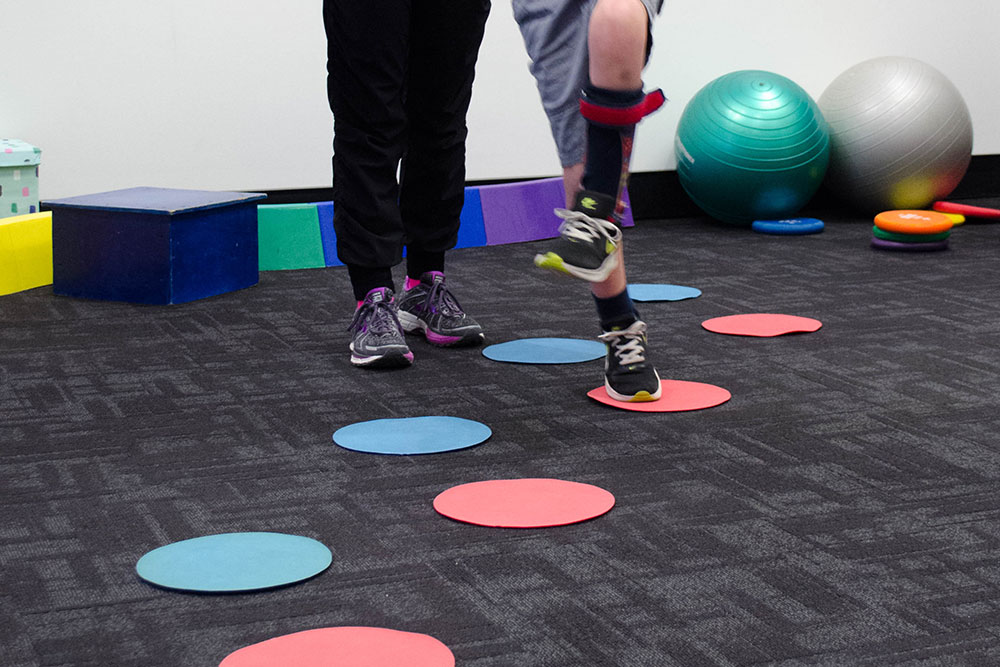

With Physiotherapist Sarah Reedman
When I tell people I am a physiotherapist who works with kids, I often receive looks of puzzlement. “Surely babies can’t sprain their hamstring, nor should a four-year-old get sciatica right?”
Well, usually they can’t, but physiotherapists who work with babies and children do use specialized techniques to treat a broad variety of musculoskeletal, respiratory, neurological and developmental conditions.
How do they do it? The core training for physiotherapists concerns the movement functions of the body. We are experts at the optimization of movement, and therefore can contribute to the health and wellbeing of all people from newborn to the centenarian.
Building Motor Skills
Problems with movement can start very early in life. Some babies can have conditions such as torticollis which is a severe tightening of the muscles in the neck (usually on one side). This causes problems for the baby in turning the head to both sides. Children with a relatively common condition called Developmental Coordination Disorder (affects 1-5% of the population) 1 may have trouble learning new motor skills, understanding how their body is represented and organised in space (spatial awareness), and may have difficulty putting a sequence of movements together (motor planning). This often causes severe restrictions in the child’s ability to participate in formal and informal physical activities, putting the child at risk of conditions such as obesity. Additionally, babies born prematurely (6.4% of births) 2 often experience a delay in their motor development that persists throughout childhood.
Physiotherapists working in paediatrics may be core health team members in the treatment of a myriad of other conditions, including Plagiocephaly (flat back of the head in infants), Cerebral Palsy, Autism Spectrum Disorder, Cystic Fibrosis, Down Syndrome and other genetic disorders, Muscular Dystrophies, Joint Hypermobility Syndromes, Arthritis, common musculoskeletal conditions (such as Sever’s Disease) and more. Some children who see physiotherapists are well, but want to improve their strength and conditioning to prevent injuries or learn a new motor skill (such as riding a bike – see our Hard Core Kids programs).
Through fun, developmentally appropriate, family-centred, and play-based techniques, paediatric physiotherapy can help optimise the movement functions of these children.
Through this, we can promote the child’s development, facilitate their participation and improve their quality of life. We can also prescribe equipment, such as therapeutic garments (clothes that assist motor and/or sensory function), wheelchairs, walking aides or seating devices that could help your child access and participate in the activities that are meaningful to them.
Children are not just mini-adults and therefore require a specialized approach to their care. Physiotherapists who work in paediatrics often have additional experience, sound knowledge of child development, and understand the impact of growth on the musculoskeletal and respiratory systems. In Australia, those with the designation APA Paediatric Physiotherapist have undergone a training pathway accredited by the Australian Physiotherapy Association. Furthermore, titled Specialist Paediatric Physiotherapists have undertaken even more rigorous assessment and training in the field to be admitted as Fellows of the Australian College of Physiotherapists.
Make an appointment to see a paediatric physiotherapist today if you have concerns about your child’s movement. Physiotherapists are a regulated profession of first contact practitioners in Australia, so a doctor’s referral is not required (though is necessary when claiming certain treatment items under Medicare, such as those under the “Better Start Initiative”). Private health fund rebates are usually available (contact your fund to confirm).
References:
Raghu Lingam, Linda Hunt, Jean Golding, Marian Jongmans, & Alan Emond. Prevalence of Developmental Coordination Disorder Using the DSM-IV at 7 Years of Age: A UK Population–Based Study. Pediatrics Apr 2009;123:693 700. doi: 10.1542/peds.2008-1770
Stacy Beck, Daniel Wojdyla, Lale Say, Ana Pilar Betran, Mario Merialdi, Jennifer Harris Requejo, Craig Rubens, Ramkumar Menon & Paul FA Van Look. The worldwide incidence of preterm birth: a systematic review of maternal mortality and morbidity. Bulletin of the World Health Organization 2010;88:31-38. doi: 10.2471/BLT.08.062554
By Sarah Reedman
